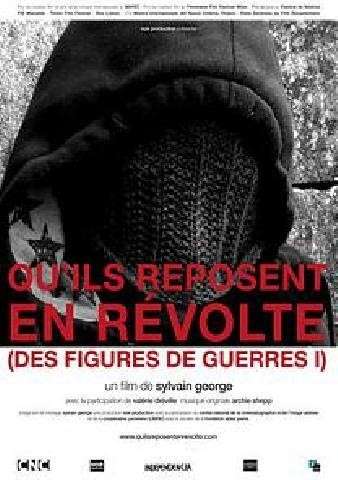Heinz Emigholz – Loos Ornamental (2008)

Heinz Emigholz-Loos Ornamental / Photography and Beyond – Part 13 (2008)
The film shows 27 still-existing buildings and interiors by Austrian architect Adolf Loos (1870–1933) in order of their construction. Adolf Loos was one of the pioneers of European Modernist architecture. His vehement turn against ornamentation on buildings triggered a controversy in architectural theory. The development of his “spatial plan” launched a new way of thinking about spaces to be built. His houses, furniture for shops and apartments, facades, and monuments were built between 1899 and 1931. They were filmed in 2006 in Vienna, Lower Austria, Prague, Brno, Pilsen, Nachod, and Paris in their present surroundings.
*
The much-anticipated follow-up to Schindler’s Houses, Heinz Emigholz’s international festival hit and a quick sellout in TIFF’s 2007 Wavelengths programme, Loos Ornamental is the latest and thirteenth installment in this leading German avant-garde filmmaker’s critically lauded Photography and Beyond series. Begun in 1984, this singular undertaking, which will ultimately amount to twenty-five films on art and design, has won Emigholz a solid place among the world’s pre-eminent artists. Meditations on the beauty of man-made works of art, his films employ a rigorous taxonomic approach to buildings –“architecture as autobiography,” as the filmmaker calls it. Loos Ornamental comprises twenty-seven buildings and interiors designed by Adolf Loos (1870-1933), one of the most important and contentious pioneers of Modernist architecture. The façades, shops, houses, apartments and monuments, built between 1899 and 1931, are all presented in their present states, shot in their natural surroundings, from Vienna, lower Austria, Prague, Brno, Pilsen, Nachod, and Paris. The film thus provides a fascinating comparative study of Loos’s work which, to some degree, both surprisingly and pleasantly deviates from the austere tenets he put forth in his 1908 manifesto, Ornament and Crime – a turning point in architectural theory, much discussed and debated to this present day. Formal asceticism meets luscious materials (i.e., the innate “ornamentation” of striated marble, of rich and undulating wood grains, of sumptuous wall paneling), like in Vienna’s famous Kärtner Bar (1908), also known as “The American Bar,” or simply, the “Loos Bar,” a shimmering jewel-box of a snug, romantic boîte. (– Andréa Picard)
*
Adolf Loos helped define Modernist Architecture with his 1908 essay proclaiming ornament to be a crime. This chronological look at 28 of his surviving buildings, without extraneous commentary, now defines him. The movie plays like a game, encouraging viewers to make connections, judge design choices, and chart the growth of this amazing artist.
*
“Be not afraid of being called un-fashionable.” – Adolf Loos
“Architecture projects space into this world. Cinemaphotography translates that space into pictures projected in time. Cinema then is used in a completely new way: as a space to meditate on buildungs.” Heinz Emigholz
*
The film shows the following buildings and interiors by Adolf Loos in order of their construction: Café Museum (1899), Kärtner Bar (1908), and the house on Michaelerplatz (1909–11) in Vienna I; the Steiner (1910), Scheu (1912/13), and Horner (1912) houses in Vienna XIII; the Manz bookstore (1912) in Vienna I, the Rosenfeld apartment (1912) in Vienna XIII, the Kníze tailor shop (1910–13), and the Boskovits apartment (1913) in Vienna I; the façade of the Anglo-Austrian Bank (1913) in Vienna VI, the Duschnitz house (1915/16) in Vienna XIX, the Rohrbacher sugar refinery, a factory, and Villa Bauer (1916/17) in Hrusovany, Czech Republic; the Peter Altenberg grave (1919) in the Central Cemetery in Vienna, the Lainz settlement house, Friedensstadt foundation stone monument (1921), and Rufer house (1922) in Vienna XIII; the Spanner country house (1924) in Gumpoldskirchen, Lower Austria, the foundation stone monument of the Laaerberg settlement (1924) in Vienna X, the reconstructed Ritter castle (1925) and Brünn trade fair grounds in Brno, Czech Republic; the Tristan Tzara house (1925/26) in Paris XVIII, the Moller house (1928) in Vienna XVIII, the Brummel house (1929) in Pilsen, Czech Republic, the Khuner country house (1929/30) in Payerbach, Lower Austria, Villa Müller (1928–30) in Prague, Czech Republic, duplexes in the Werkbund Settlement (1930–32) in Vienna XIII, the workers’ settlement Babí (1931) in Nachod, Czech Republic, the Mitzi Schnabl house (1931) in Vienna XXII, and the Adolf Loos grave in the Central Cemetery in Vienna.
*
Heinz Emigholz was born in 1948 outside of Bremen. Since 1973, he has worked in Germany and the United States as a freelance filmmaker, artist, writer, cameraman, producer and journalist. He looks back on numerous exhibitions, retrospectives, lectures and publications. In 1974 he started his encyclopedic drawing series Die Basis des Make-Up , currently the subject of a major solo exhibition at Berlin‘s Hamburger Bahnhof museum. In 1978 he founded his own film production company, Pym Films. In 1984, he began a film series called Photographie und jenseits (Photography and Beyond). He has held a professorship in experimental filmmaking at the Berlin University of the Arts since 1993.



1.37GB | 1h 12mn | 640×480 | avi
https://nitro.download/view/9AE226EE4ECA0F6/Heinz_Emigholz-Loos_Ornamental_(2008).avi
Language:English + 2nd audio track in German
Subtitles:None



![Heinz Emigholz - Bickels [Socialism] AKA Streetscapes - Chapter 2 (2016) Heinz Emigholz – Bickels [Socialism] 2017](https://worldscinema.org/wp-content/uploads/2018/11/Heinz-Emigholz-–-Bickels-Socialism-2017.jpg)



Hi! Could you please re upload this file? Thank you so much
done..